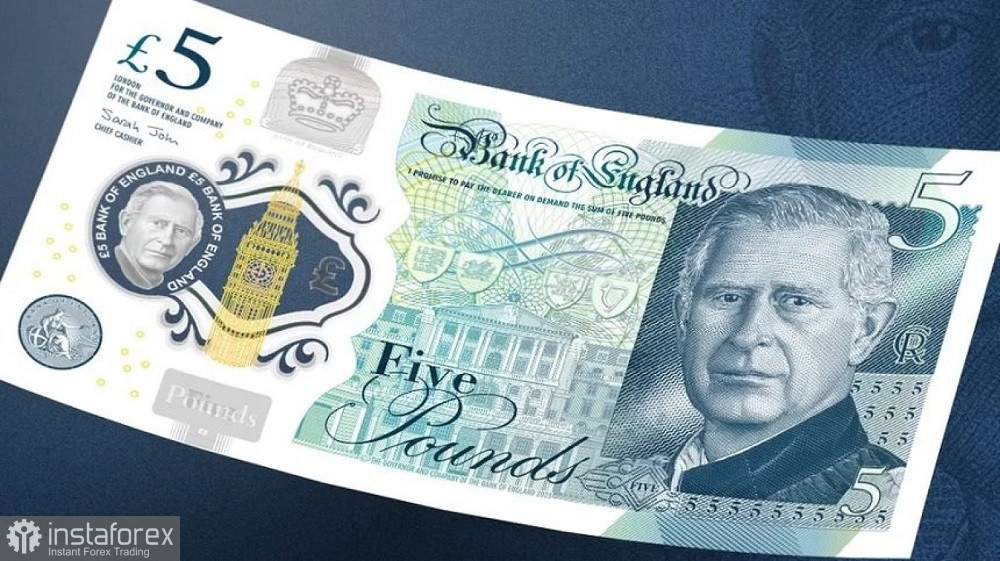The Bank of England, following the results of the first meeting in 2023, raised interest rates by 50 basis points to a target of 4.0%. At the same time, the BoE reduced stocks of assets held. It now totals almost 838 billion pounds, compromising 826 billion of UK government bond purchases and 11.5 billion of sterling non-financial investment-grade corporate bond purchases. In general, the BoE fully justified traders' expectations, at least in terms of formal decisions. But as for further prospects, the bulls were disappointed with the central bank.
Dovish signals
First, the central bank lowered its inflation forecast for the first quarter of this year to 9.7% (previously expected to rise to 10.1%). At the same time, the central bank improved its forecast regarding the depth of the decline in the British economy. If earlier economists of the central bank expected a decline in UK GDP by 0.6% in the first quarter of 2023, now a more modest decline is expected at 0.3%.

Secondly, the BoE has changed the wording of the accompanying statement. In particular, the central bank abandoned its previous instruction that the central bank would need to act "decisively". The text of the February final communique says that further tightening of monetary policy will be required in the event of a "steady increase in price pressure." That is, if the central bank sees signs that inflation will – a) remain too high; b) remain high for too long.
Remember that the consumer price index for December reached 10.5%: it has been consistently declining for the second month in a row. The CPIH all goods index similarly came out in the red zone – with a forecast of growth to 13.9% (YoY), it came out at 13.4%. There is also a two-month downtrend.
Bailey didn't help the pound
Against the background of the downward dynamics of inflation, as well as amid the softened rhetoric of the accompanying statement, it can be assumed that the interest rate has already reached its peak (which is much lower than the expected final level of 4.5%). The central bank made it clear that if inflation does not resume its growth, but rather shows a downtrend, the issue of the next rate hike will be decided on a case-by-case basis. It is noteworthy that when journalists asked BoE Governor Andrew Bailey if the rate had reached its peak, he answered somewhat vaguely, but in general did not refute such an assumption. He made a reference to the text of the accompanying statement, drawing attention to the fact that the central bank has changed the phrases that were previously used. Bailey told reporters in a press conference: "The change in language reflects a turning in the corner, but it is very early days."
Commenting on the latest release on the growth of the consumer price index, the head of the BoE said that according to the forecasts of economists of the central bank, inflation in the UK will continue to decline this year, "and decline quite sharply." The updated forecast assumes that price growth will decline from the current 10.5% (y/y) to "less than 4%" by the end of 2023. But in 2024, inflation should fall "significantly below the target of two percent."
There are a few more moments, so to speak, of a "dovish stance". Unlike the Federal Reserve, the BoE did not refute rumors that the central bank may resort to a rate cut at the end of 2023. Bailey only noted that if the economy develops in accordance with the central forecast, then the central bank will have to reassess.
In addition, we should not forget that at the February meeting, two members of the Committee - Silvana Tenreyro and Swati Dhingra - once again voted against raising the interest rate. In their opinion, the central bank "has already done enough" to curb inflationary growth. They voiced a similar position at the previous December meeting.
Conclusions
Apparently, the BoE is approaching the end of its current rate hike cycle. Bailey does not say this outright, but his references to the rather mild wording of the accompanying statement speaks volumes. The updated central bank forecasts, as well as the actual divide in the Committee, also suggest a dovish bias. If inflation in Great Britain continues to show a downtrend, we'll face the crucial question: will the BoE decide to raise the rate again or stop at 4.0%?
In general, the results of the February meeting were not in favor of the British currency. The pair updated its two-week low, but stopped at around 1.2240. Traders are forced to reckon with the weakened dollar, which does not allow the bears to realize their full potential. If the greenback becomes stable, the downtrend is likely to resume with the nearest target at 1.2140. At this price point, the bottom line of the Bollinger Bands indicator coincides with the upper limit of the Kumo cloud on the D1 chart.
 English
English 
 Русский
Русский Bahasa Indonesia
Bahasa Indonesia Bahasa Malay
Bahasa Malay ไทย
ไทย Español
Español Deutsch
Deutsch Български
Български Français
Français Tiếng Việt
Tiếng Việt 中文
中文 বাংলা
বাংলা हिन्दी
हिन्दी Čeština
Čeština Українська
Українська Română
Română

